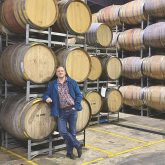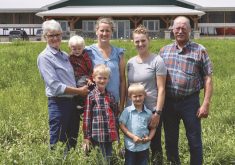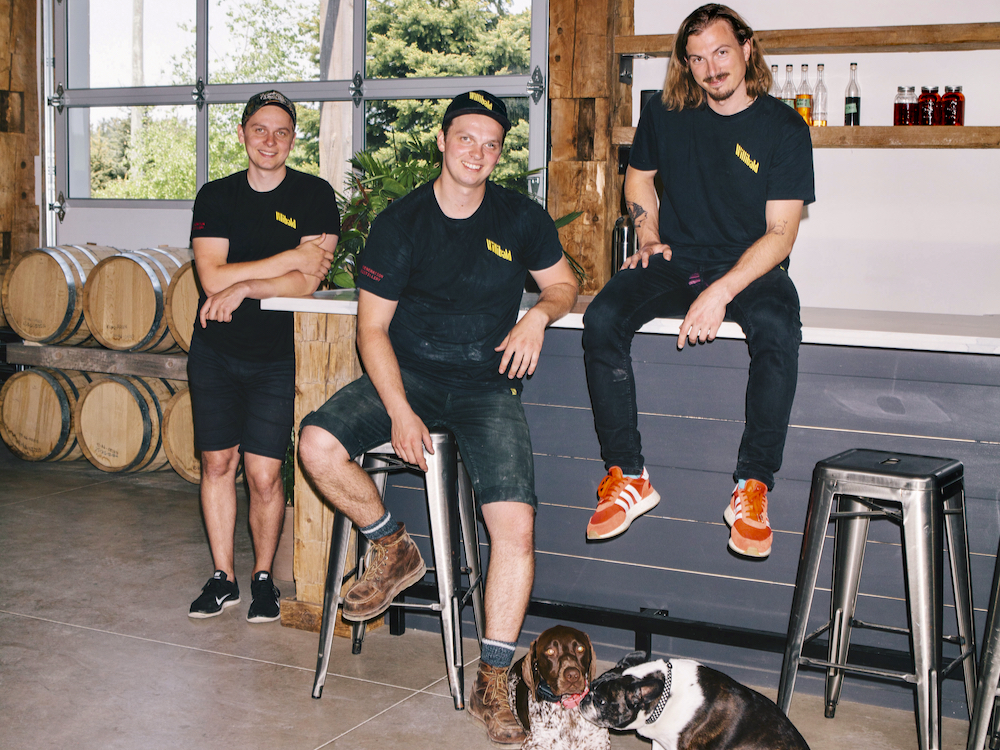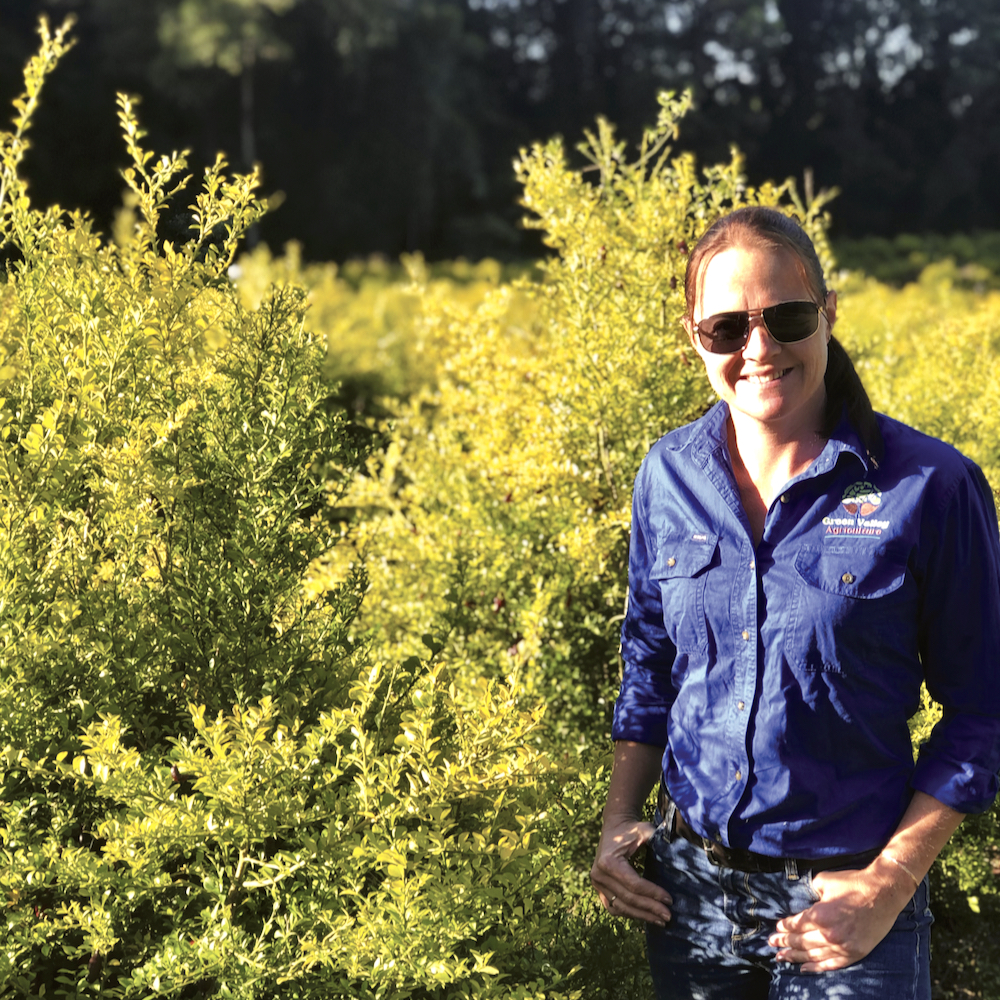John Cote already knew a thing or two about adding value to farm-grown ingredients and about how to run a successful company in the value-added sector even before he set out to study how other business owners are doing it.
In 2010, the fifth-generation Saskatchewan farmer and his spouse and business partner, Barb Stefanyshyn-Cote, gave up conventional grain farming. Instead, they opted to establish Black Fox Farm and Distillery, where today they produce top-quality whisky, gin and other spirits.
The pair have earned wide recognition and international awards, both for their whisky and for their tourist attraction on the outskirts of Saskatoon.
Read Also

What to consider when setting up farm-related business ventures
Things to consider before launching a farm-adjacent side business.
Country Guide featured the business in a full-length feature in a 2018 issue, where Cote and Stefanyshyn-Cote described their journey and how they built a business transforming not only grains, but also small fruits, vegetables, and even cut flowers into higher-value products.
Cote, though, has been on a different kind of journey lately. He has just returned from Japan, the United Kingdom, Australia and Tasmania, and from travels across Canada pursuing a Nuffield scholarship to meet business owners on the same sort of path that he’s on — building successful businesses in value-added production.
His report, An Exploration of Internal and External Forces Influencing Small Agri-Value Businesses has just been released on Nuffield Canada’s website, and it’s a deep dive into his title topic.
Every entrepreneur faces challenges and complexities as they embark on building a value-added enterprise, says Cote. For starters, they must figure out the right kind of model and management approaches for the business, and they also have to prepare themselves for working in a highly regulated and challenging business environment.
Cote had grappled with those challenges himself. Now he wanted to know, what are the ingredients that enable value-added companies to grow and succeed?
“This report is not meant to be a business guide popular in airport stands, but a journey of where I was in my business, and what I have learned during my Nuffield travels that pertained either directly, or indirectly to it,” Cote wrote in the report.
“As I started thinking a bit deeper on what may be causing us pain in our business, I thought examining other small value-added processors would reveal how they were becoming successful and growing. I also felt there could be other issues in the whole value-added enterprise that I was missing. Through Nuffield, I could interview disparate businesses from craft breweries to cheesemakers from all areas of the world and gain insight into transforming a fledgling value-added company into a successful enterprise.”
The former Saskatchewan grain grower prepared a series of interview questions to take with him on his visits both to vertically integrated companies that produce their own raw ingredients and transform them into consumer-ready products, and to companies that source their ingredients from the regular supply chain.
In Kozaki, Japan, he met with sake producers who spoke of how their brand value was derived from deployment of centuries-old methods making the traditional fermented rice alcoholic beverage. As Cote would later write in his report, their customers enjoyed the same product as their parents and grandparents, and the tradition associated with it was key to their brand.
“Another interesting model that I saw was a state-of-the-art production facility, but with the extra value-added component of allowing customers to bring rice from their own farms and create their own sake in a traditional method,” he said.
“This allowed the company to create value from the traditional niche, while at the same time reaping the rewards of innovation in the processing facility.”
Cote also visited wine, beer and other spirits producers who were leveraging vertical integration to produce unique ingredients, which could then be transformed into traditional products, although another approach was to create value in the craft brewing sector by continually innovating and creating new recipes and flavours.
His report details the strategic advantages as well as the drawbacks of each approach.
Using vertical integration to control and curate a supply chain, for example, is a form of intellectual property, whereby the process and resulting product could be regarded as trade secrets, or have sufficient inherent barriers that other companies cannot replicate it. It’s a defensive strategy that can often be adapted by agri-value processors in order to protect a market that they build.
The value of your value-added
“If you look at really successful companies,” Cote says, “what they do is try something that no one else can replicate, or can’t do so easily. Then, in the marketplace, they can command a premium for it, and hence profitability is that much better.”
Likewise, the cheese producers, sweet potato growers, commercial cut flower growers and other value-added companies he visited described similar efforts to really stand out in the market.
In Tasmania, a dairy farm turned cheese-maker had clearly defined their own unique product value by being wholly transparent about their farm practices, informing and engaging their customer “from farm to fridge.” They were intentional about building a feeling of trust into their brand, Cote says, and it was an excellent example of how a business had identified the brand value from their customers’ point of view.
This cheese producer was especially helpful in nailing down one of fundamentals that sets an agri-value business on course — finding and clearly communicating “the value of your value-added.”
“We came down to it being you have to figure out ‘what is the value of what you’re doing,’” Cote says.
Too many times, those who start up a value-added enterprise don’t identify that value clearly enough, and wind up back in the world of commodity production once more. Marketing cheese as “comes from the farm,” or even more ubiquitously, “from cows” is less impactful than saying it comes from “the world’s happiest cows.”
This means one of the barriers to growth — which is true in all smaller businesses and not just value-added agriculture — is finding the right message about your product that will allow your customer to truly understand the value you bring to the market.
That may sound simple enough. Still, many businesses fall at this first hurdle.
Growth and profitability
About halfway through his report Cote cites the old adage “you would never plant a tree without the expectation that it was going to grow.”
Growth is an essential part of every business’s life cycle, he writes, whether you’re developing any sort of new company in agriculture or any other sector.
Obviously, growing it to the point where the business is profitable is key to the success, too.
This, though, is also where new companies may falter. Why do so few producers who have great ideas for agri-value businesesses actually pursue them, and even fewer transition them into profitable enterprises?
One reason is very basic, Cote says. They discover that producing something of higher value doesn’t automatically mean profitability. There are all sorts of reasons this can happen, but one is that the entrepreneur hasn’t planned to grow or to scale up the business.
“We see it all the time,” Cote says. “People don’t plan on growing.”
The producers he met during his Nuffield travels, however, had recognized the need for efficiencies of scale. The value they were adding to the commodities they processed therefore had to be tangible in the consumer’s eyes or else they would not be able to extract the premium they needed to be financially stable.
Their idea couldn’t compete on a low-cost basis, so the innovation had to to justify their investment in equipment and marketing.
“Everything within your business has to be scalable if you want to grow,” Cote says. Or, to put it with a sharp end on it. Adopting practices that aren’t scalable is counterproductive.
“You still won’t be profitable because either you won’t have big enough economies of scale or you won’t have access to resources that someone else has, and you’ll keep on the treadmill of always working on really thin margins,” Cote explains.
High-volume businesses can thrive in a low-margin environment, of course. But those aren’t the kinds of markets that value-add farmers can produce to or protect.
Internal and external forces
There’s a wealth of other insights to be found in Cote’s detailed report, which, as it says in its title, distinguishes both internal and also external forces that influence these farm value-added businesses.
Internally, a lot boils down to clarity of purpose and to the leadership of the entrepreneur, says Cote. Every successful value-added business owner he talked to agreed: these are the two crucial factors that will either restrict or promote growth in new companies.
There’s another vital learning from the farmers who have succeeded at value-adding too, Cote adds. “Although external influences tend to cause the most frustration within a business, internal factors are more important as the business has an opportunity to improve their systems and management to create opportunities from within.
“The trait that separated the (businesses) that were successful and those that were not, was the ability to think through the process of getting bigger and being successful.”
But that doesn’t mean you can ignore external factors. Cote devotes a considerable section of his report to them, and especially to the policy environments within which business operates. Many businesses struggle with regulation, for example, and will expend considerable time and money ensuring they comply with the rules.
“Where governments can improve this environment is by adopting their own practices of clarity,” he says in his report. “The framework of policy has to be such that businesses can be competitive while fulfilling societal goals. It is a balance that is hard to achieve. We see, however, that people and businesses involved in the sector are keen to help, and in ways feel frustrated that they are not more engaged.”
External influences will become that much more influential on business as government adopts new policies with respect to sustainability and climate change, Cote adds.
All Nuffield scholars derive both significant professional and personal development from their experiences, and he certainly did as well, says Cote.
“In our own business, understanding our own creation of value has allowed us to be confident enough to actively work towards expansion of the business,” he writes in his report. Having gained insight into the influence of government programs on small value-added businesses will allow him to make a more effective contribution to the agriculture sector, too, he says. His sponsors were Nuffield Canada Alumni and the Saskatchewan Ministry of Agriculture, and he is a board member of the Saskatchewan Food Industry Development Centre, so he’s looking forward to future opportunities to share his Nuffield research widely, particularly with government, and hopes it will contribute to helping grow his province’s value-added sector.
Q&A
It’s a trait of Nuffield scholars that they actively pursue continuous, lifelong learning, and that they always encourage others to find these opportunities, too. John Cote and his spouse Barb Stefanyshyn-Cote are exceptional examples of this. Both make this investment in themselves. Barb is also a Nuffield scholar. In 2003 she embarked on travels to several countries, including China, looking for ways to stem the outflow of rural populations, afterward publishing her own extensive report through Nuffield Canada entitled The Social Impact of Increasing Farm Size and Rural De-population.
Country Guide: We always ask the Nuffield scholars we interview to tell us how you find time for the travel and report writing required of these scholarship opportunities.
John Cote: The easy answer is you have a good team and they’ll make up for it. But I like to think of myself as fairly goal driven. You set yourself a goal and it happens. If you continually say “I can’t do that because I don’t have the time,” you’ll never have it. If you say “I’m going to be gone for the next six weeks,” you just rearrange your life around being gone for that six weeks.
It’s all about establishing the goal and just doing everything you need to do to make it work. And I have the unique experience of being both a Nuffield Scholar and a Nuffield spouse. When Barb did her Nuffield, she left me with four children, the youngest was two and the oldest was seven. Having Barb gone for those six weeks was probably my best experience as a parent, ever.
Because when you’re on your own you have a real appreciation for everything the other person does. It was a really a great experience. Usually the Nuffielder is always worried about the people that have to stay at home and take up the slack. It can be a good growing experience for both sides.
CG: Nuffield Canada’s Scholarship opportunity is a chance to get away and think more deeply about a subject area of a scholars’ choosing. What would you say is the value of stepping away from your own business for a while this way?
John Cote: Barb and I are great believers that continuous learning is the only way to success. The biggest failing we have as small business people, whether it’s value added or not, is we get so busy in the day-to-day running of the business we don’t have time to sit back and be introspective and think about what we’re actually doing.
You need to make that investment in yourself and go out and look for answers. If you’ve got questions, you need to go out and look for answers. Don’t expect the answers to come to you. You need to go out and start digging and finding out.
There’s a lot of really well-run businesses out there and they’re typically willing to share where they went wrong, and what they would do again, and what they would do sooner. Hopefully a lot of people will go out and say “This is something that we can do.” Maybe it won’t be through a Nuffield scholarship, but maybe on their own.
CG: You’ve written extensively about the value of leadership in business success. What is the overall impact you would say Nuffield has already had on you, and will continue to have?
John Cote: I wouldn’t consider myself a natural leader by any stretch. The way our business is structured, Barb would have much more of the leadership role. When I came back I realized that I’d been kind of always been saying to her “You’re the leader, you do the leading.”
But it’s not that way. Everybody has to do the leading. Because that’s part of what you can bring to the business. No one can understand the business the way Barb and I understand it, because we’re the ones that are driving it. We have to make sure that we’re messaging together, and leading together, and that we’re encouraging together as a team all the time.”
The Canadian Nuffield Agricultural Scholarship Association (Nuffield Canada) is part of Nuffield International, a non-profit global organization that inspires individuals around the world to travel, study and shape the future of agriculture and their local and global communities. Scholars devote months of their time digging into a topic of interest to them, developing expertise in their area of study that then makes them an invaluable resource to others.
– John Cote’s full-length report An Exploration of the Internal and External Forces Influencing Small Agri-Value Businesses is found on Nuffield Canada’s website.















